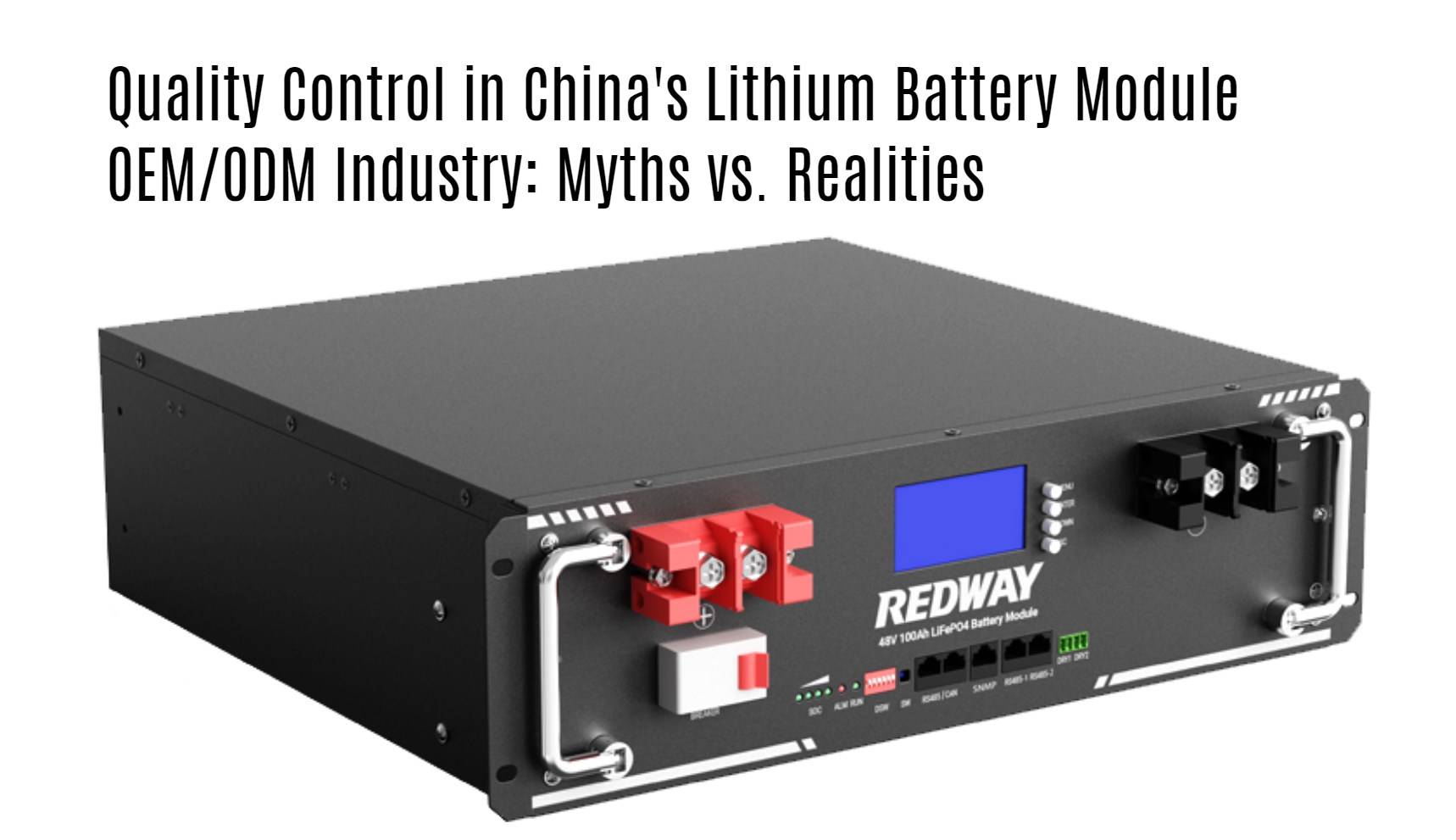The lithium battery module industry in China has rapidly evolved, making it a crucial player in the global market. As OEM (Original Equipment Manufacturer) and ODM (Original Design Manufacturer) sectors expand, understanding the intricacies of quality control becomes paramount. This article delves into the common myths and the stark realities associated with quality control in China’s lithium battery module industry, offering an in-depth analysis for stakeholders and decision-makers.
Understanding Quality Control in Lithium Battery Modules
Quality control (QC) in the lithium battery industry is integral to ensuring product reliability, safety, and performance. The QC processes for lithium battery modules in China are often misunderstood due to prevalent myths that oversimplify the complex nature of manufacturing and testing in this sector.
Myth 1: Quality Control in Chinese Factories is Uniform Across the Board
A prevalent misconception is that all Chinese factories adhere to the same level of quality control. In reality, there is a significant disparity in quality control standards across different manufacturers. While some OEMs and ODMs operate with advanced QC protocols and certifications, others may follow minimal or outdated practices.
Leading manufacturers often comply with international standards such as ISO 9001 and IATF 16949, ensuring rigorous quality checks and balances throughout the production process. These standards encompass comprehensive QC measures including incoming material inspection, in-process quality control, and final product testing.
Myth 2: The Quality Control Process is Only Concerned with Final Product Testing
Another misconception is that quality control in lithium battery production focuses solely on final product testing. In reality, effective quality control is embedded throughout the entire manufacturing process.
- Incoming Material Inspection: This involves verifying the quality of raw materials before they are used in production. For lithium batteries, this includes checking the purity and consistency of lithium compounds, electrodes, and electrolytes.
- In-Process Quality Control: During manufacturing, various quality checks are performed, including the monitoring of temperature, pressure, and chemical composition. This ensures that the battery cells are produced consistently and meet predefined specifications.
- Final Product Testing: While crucial, final product testing is only one part of the QC process. This testing assesses parameters such as capacity, cycle life, safety, and performance to ensure the batteries meet the required standards.
Myth 3: Chinese Manufacturers Use Outdated Technology for Quality Control
Contrary to the belief that Chinese manufacturers rely on obsolete technology, many leading companies in the lithium battery module sector invest heavily in cutting-edge QC technology. Advanced automated testing systems, precision measurement instruments, and AI-driven analytics are increasingly employed to enhance the accuracy and efficiency of quality control.
For instance, some manufacturers utilize X-ray fluorescence (XRF) for material composition analysis and thermal imaging cameras to detect potential hotspots in battery cells. These technologies not only improve the reliability of quality checks but also aid in meeting international safety standards.
Reality: The Role of Certifications and Compliance
Certifications play a critical role in validating the quality control processes of Chinese lithium battery module manufacturers. Prestigious certifications such as UL (Underwriters Laboratories), CE (Conformité Européenne), and RoHS (Restriction of Hazardous Substances) signify adherence to international quality and safety standards.
Manufacturers seeking to export their products globally often undergo rigorous audits and evaluations to secure these certifications. This ensures that their quality control processes align with global best practices and regulatory requirements.
Reality: The Impact of Supply Chain Management on Quality
Quality control is not isolated to the manufacturing facility alone; it extends to the entire supply chain. Effective supply chain management (SCM) is crucial for maintaining the quality of lithium battery modules.
- Supplier Quality Management: Evaluating and selecting suppliers based on their quality standards and reliability is essential. Manufacturers often conduct thorough audits and assessments of their suppliers to ensure that raw materials meet quality requirements.
- Traceability and Documentation: Comprehensive documentation and traceability practices enable manufacturers to track the origin and handling of materials throughout the production process. This helps in identifying and addressing potential quality issues promptly.
- Logistics and Handling: Proper logistics and handling practices are vital to prevent damage or degradation of battery modules during transportation and storage. Ensuring that batteries are stored under optimal conditions helps maintain their performance and safety.
Reality: Continuous Improvement and Innovation in Quality Control
Leading Chinese manufacturers are committed to continuous improvement and innovation in their quality control practices. This includes investing in research and development (R&D) to develop new testing methods and enhance existing quality control protocols.
Lean manufacturing principles and Six Sigma methodologies are often employed to optimize production processes and minimize defects. By fostering a culture of quality and innovation, manufacturers can achieve higher levels of product excellence and customer satisfaction.
Conclusion
Understanding the realities of quality control in China’s lithium battery module OEM/ODM industry is essential for stakeholders aiming to make informed decisions. While myths may cloud perceptions, the truth reveals a landscape of diverse practices, advanced technologies, and rigorous standards.
By focusing on comprehensive quality control processes, adhering to international certifications, managing the supply chain effectively, and embracing continuous improvement, manufacturers can ensure that their lithium battery modules meet the highest standards of performance and safety.
In navigating the complexities of this industry, stakeholders must remain vigilant and informed to differentiate between myths and realities, ultimately driving success in the competitive global market.




